I constantly heard about the Worm composter for organic waste and finally wanted to know to what extent worms can affect the Zero Waste Lifestyle can support. I met up with David, the founder of Wurmkiste.at, who makes his own worm bins for organic household waste. In the following interview, you can find out everything about the wooden worm composter - from the idea, the worms and the functions and benefits to the most frequently asked questions. Have fun!
Hello David! Who and what is behind the worm box?
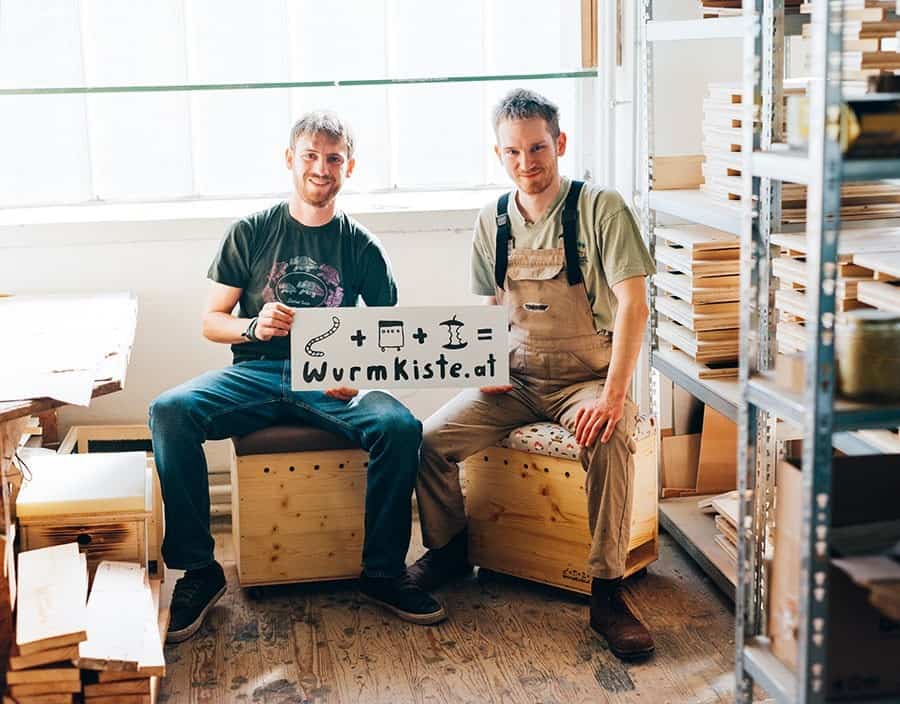
The story started about 7 years ago when I went to Vienna to study. The problem then, and unfortunately still today, is that organic waste in residual waste (see Separate waste correctly) lands. For me, that's an absolute no-go. I came across a friend's worm bin by chance and of course built a worm composter myself. There were 5 of us in the flat share at the time and we were able to recycle all our organic waste with the help of the earthworms without any odor. I was thrilled and became more and more interested in the subject. About three years ago, I founded a company with my brother Thomas (a carpenter) with which we professionally build worm boxes out of wood and breed worms. We enjoy working with wood and living out our own values in the company.
How does the worm composter work?
A wooden worm bin can be thought of as a small compost pile (see also the article Proper composting) for the home. Between 500 and 2,000 compost worms live and work in it, destroying the daily organic waste that accumulates in a household. The whole thing works odorlessly, of course, otherwise many people would have already sent their worm bins back 😀
"A worm eats about half its body weight every day!"
It was very important to us that the Wurmkiste fulfills several functions at once. That's why it became a stool. With castors, you can pull it out from under the table when you need extra space. Sometimes it's a bit strange to think that you're sitting on compost worms, but most people find it quite funny.
Structure and function of the worm box briefly explained:
The worm bin has a waste bin in the box, which helps to harvest the worm humus without disturbing the worms. The worm composter also has a compartment in which the worm tea cup is located. By sliding out a panel (this covers the worm tea cup and can be customized, e.g. with buttons etc.) you can access the cup and the worm tea. This means that worm hummus and worm tea can be harvested separately.
Worm tea in brief - Worm tea is a liquid fertilizer that is automatically produced during the worm composting process. It is practically like a magic potion for plants and helps to suppress pests.
For the construction and handling of the worm composter we have some cool videos on our homepage:
What do the worms and organisms do with the organic waste?
Microorganisms (bacteria & fungi) work with compost worms (belong to the earthworm family) to decompose the organic waste. First, the MOs (=microorganisms) become active and break down the surface of the waste in order to multiply with the materials obtained. The compost worms have no teeth and suck on the fungi and bacteria. The MOs thus break down the organic waste and the worms consume the MOs and solid substances and generate valuable worm compost. Since the technology of earthworms is thousands of years old, it has been practically perfected. The end product, worm humus, is also known as black gold.
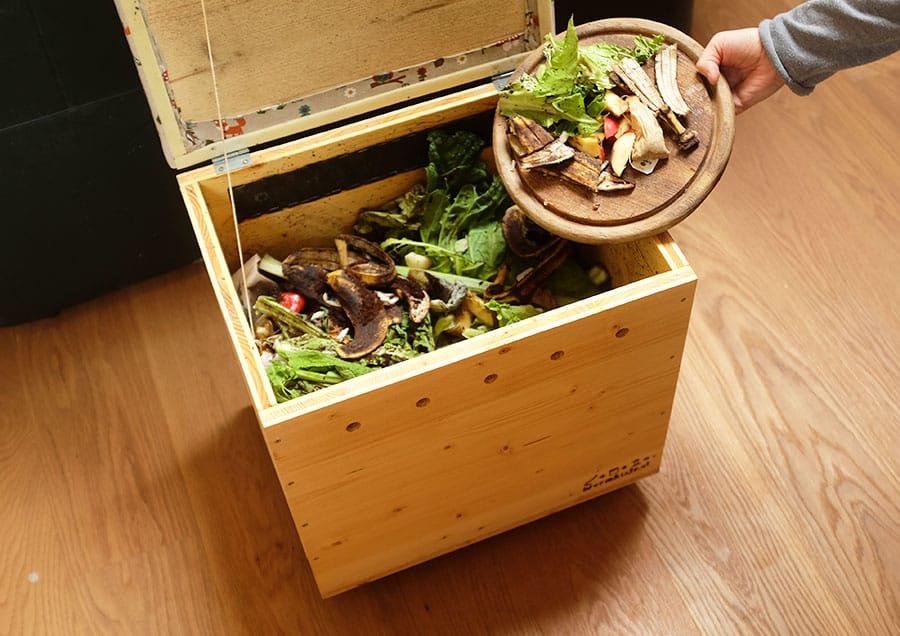
What can go into the worm composter and what not?
Fruit scraps, tea bags, fruit, leaves (no nut leaves), newspaper (no glossy paper), cardboard, eggshells, coffee grounds (see above) are allowed. Coffee grounds application ideas), vegetables and bioplastics. They prefer it cut into small pieces, as this increases the surface area and the leftovers can be better utilized. It also makes sense to moisten some scraps, such as newspaper (see Folding garbage bags from newspaper) or dry leaves. Dry material is not eaten.
Not allowed in Poisonous, hard to digest and dry things. Bones, chemicals, dairy products, cheese, citrus fruit, meat, glossy paper, lots of cooked, marinated and salted food should not go in the worm bin. The compost worms and microorganisms would either take a very long time to break down these things or they would perish. They also don't like animal feces or cat litter.
How is the worm composter manufactured and delivered?
The worm boxes are made from ecological raw materials in a small workshop in Upper Austria. We source our raw materials from regional businesses as far as possible. In this way, we not only promote the regional economy and thus counteract the rural exodus, but also ensure that family businesses continue to exist. We also work together with an integrative company that enables people with disabilities to enter the job market. Every crate that we lovingly produce by hand thus secures jobs. As an environmentally conscious company, we only use worm-digestible packaging material. So everything is plastic-free.
Can you sit on the composter, or does it smell too strong? 😉
Admittedly, having 1000 worms in your home raises a few questions. BUT a well-maintained worm bin smells pleasantly of forest soil. So grab a book, put it on the composter and make yourself comfortable. See for yourself.
Why should everyone have a worm composter at home?
There are many reasons for using a worm composter. The most important ones are
- No more organic waste in residual waste. Under anaerobic conditions, as occurs in a waste garbage can, climate-damaging greenhouse gases are produced and nutrients are lost.
- Our own worm humus and worm tea. 200 kg of organic waste (2-person household per year) becomes 20-30 kg of black gold. Plants love it and many think it is Asterix and Obelix's magic potion for plants.
- Earthworms are easy-care pets that not everyone has. You immediately strike up conversations with friends and find yourself lovingly caring for the worms.
In the article 10 really good reasons for a worm composter to find out more about the advantages of a worm composter.
Where can you get the worm composter?
The worm boxes are available ready-built or as a do-it-yourself set directly in our online store Wormbox.at - We send everything by post, including the compost worms. This is cheaper for the consumer as we do not have to rent different branches. This allows us to keep the quality high, which is of course very important to us. We want to demonstrate the possibilities of worm composting and offer a practical, user-friendly product with which you can easily reduce the proportion of organic waste in residual waste and thus significantly reduce CO2 emissions. We also offer support after the purchase of the worm bin. There are always unanswered questions and it's good to be able to call someone quickly. There are already around 3,200,000 compost worms living in the worm boxes from Wormbox.at and recycle around 320 tons of organic waste every year.
Thank you David! We wish you continued maximum success!
I recently started using the worm bin myself as a test. The instructions are ideal, so I couldn't make any mistakes. The box is in my kitchen and doesn't smell at all. Previously we always had a classic compost bin, which unfortunately fruit flies felt very comfortable in. After some familiarization and testing time, I can say that my organic waste has actually been transformed into fertile soil, which I can now use to grow my own fruit. Planting herbs and co. can use. I hope this interview gives you a new perspective on worm composters for the home. Do you have any questions, suggestions or your own experiences that you would like to share? Then please leave me a comment below this article.

PS.: Learn in the article Reduce food wastehow you can avoid organic waste right from the start. Also the article Keep food for longer will help you further. Have fun!

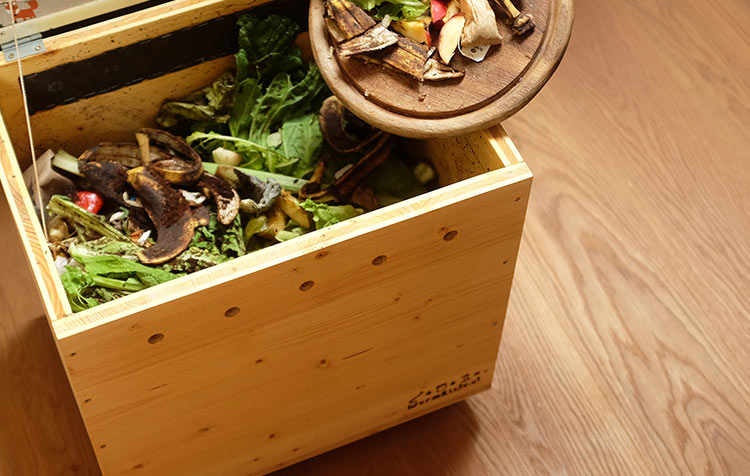



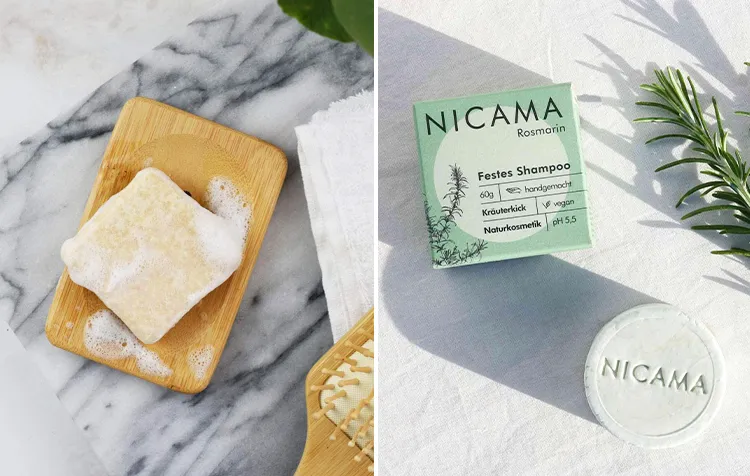
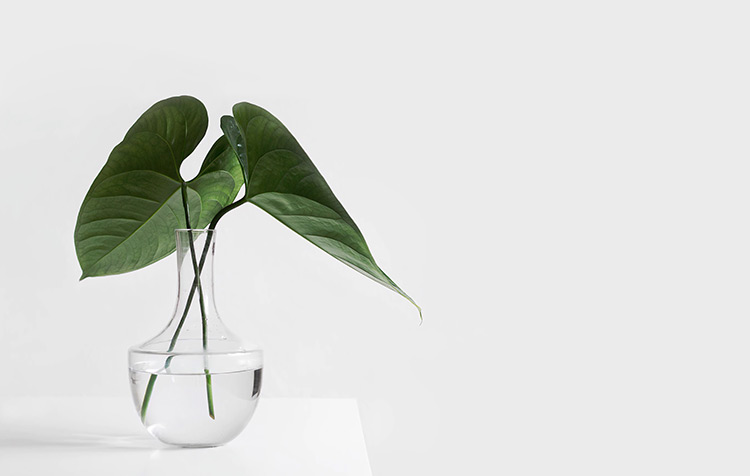
Hello Christoph, thank you for the interesting contribution. I don't want anything "toxic" in the worm bin. Does this mean that I must not put any fruit and vegetable leftovers from conventional cultivation, but only those from organic cultivation? Thank you and greetings, Alexandra
Hi Alexandra! Good point 🙂
But you can, of course, put all fruits and vegetables in the composter - except citrus!
Just follow the instructions in the manual.
Many greetings and a happy new year to you,
Christoph
Hello Christoph,
Thank you for interesting information.
Do the worms need any kind of care? Can overpopulation or extinction occur? Thanks
Hey Zlatica! Inform yourself best at Wurmkiste.at about it. From personal experience I can say that you have to add substrate from time to time. The effort is basically but really minimal - apple scraps pure and after a few days / weeks everything is gone 😉
Best regards
Christoph